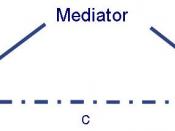Short Title Header - p. 288 (5.06)�� PAGE �1��� Collaborative Problem Solving�� PAGE �1���
Collaborative Problem Solving
Duquesne University
Chester Skinner / MLLS 714
11/13/2008�
I would not say that J.A. Murray's list of disadvantages to collaborative negotiations and problem solving is neither correct nor incorrect. I believe that depends on your perspective of the conflict or problem. I would say that I agree that the list as being disadvantages.
Murray says that collaborative negation "is strongly biased toward cooperation, creating internal pressures to compromise and accommodate that may not be in one's best interests" (pg. 257). This is often seen when a mediator is brought into the situation. Let's take a work strike for example. Neither side will get what they want. Each side ultimately comes to a compromise with the other. I would say that the vast majority of the time both sides will agree to something that is not in their best interest to get something else they strived to attain.
This results in a sense of give and take to come to a final decision.
According to Murray, collaborative negotiation also "focuses on being sensitive to others' perceived interests; increases vulnerability to deception and manipulation by a competitive opponent; and increases the possibility that the settlement may be more favorable to the other side than fairness would warrant" (pg 257). This can be seen when trying to win a contract or make a large purchase. When you go to a car dealership to make a purchase you will negotiate with the salesman on a price. Each side is trying to get the best price. The salesman may tell you that they are presenting the lowest possible price ultimately trying to deceive you. You may respond to that by telling them you are going to another...


